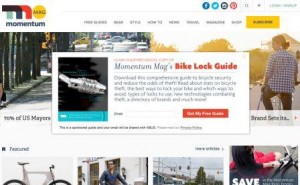Contributor Jim Williams says it’s time to really listen to your customers’ words and understand the experience they expect you to deliver.

Ever since my team attended Content Marketing World this fall, I’ve been thinking about the benefits of user-generated content (UGC). It was a hot topic during the conference that left me, and many others, thinking about how — in an age where buyers don’t trust our corporate messaging — B2B marketers can get even more value from the thoughts and ideas that come from our customers.
When it comes to user-generated content, both B2B and B2C brands are seeing impressive results. You may recognize some of these examples on the B2C side. Brands like Red Bull and GoPro have built their brands around user-submitted videos and photos. Starbucks collected 1,200 customer submissions on Instagram with its holiday cup design contest. And T-Mobile said it received 80,000 breakup letters from customers in response to its campaign to get people to switch over from their competitors.
B2B has also gotten into the game; 97 percent of B2B buyers find user-generated content more credible than other content types, according to a Demand Gen Report survey.
These kinds of results and numbers demonstrate why it’s so important to communicate with customers in their own language. And in much the same way user-generated content helps add credibility and relevance to your e-books, webinars or blogs, candid feedback from those same customers can help you strengthen your value proposition and your core messaging.
Rethinking customer feedback
Customer feedback can come in many forms: customer surveys, focus groups or meetings with a handful of your top consumers. Typically, this information is used by product management groups to improve their product design, or by product marketers to define value propositions and develop messaging.
Turning this feedback into valuable insights that you can use to drive demand means getting close to your customers and taking the time to listen to their words and their ideas.
Three ways to leverage customer feedback
- Really listen to your customers’ words
In today’s always-connected society, it’s almost impossible for companies to get their message heard. With so much noise competing for their attention, buyers are tuning out vendors in favor of their peers and demanding content that is relevant to them.
According to Demand Gen’s 2016 B2B Buyers Survey Report, when B2B buyers visit your website, the first thing they look for is relevant content that speaks directly to them. Right now, your dirty marketing fingerprints are all over that content, and it’s not authentic.
To find out what’s most relevant, you need to ask the right questions, and then really listen to your customers’ answers. Keep asking, “Why?” to get to the root of their pain points. Then pay attention to your customers’ exact words so you can shape your message around those words, instead of writing your own interpretation and risk being tuned out.
- Find out why customers “hire” your product
Marketers are pouring lots of resources into getting to know their customers. After all, we argue, you can’t deliver a great experience to someone you don’t know.
While this certainly is true, gathering more and more of the same kinds of demographic or psychographic data about your customers won’t get you very far. You need to go deeper. You need to find out why customers buy or “hire” your product.
I first heard about this concept of “products for hire” during a keynote speech by the Re-Wired Group’s Bob Moesta at CEB’s 2016 Sales and Marketing Summit. It goes like this: When customers choose your product or service, they hire it to do a specific thing. If the product does its job, they rehire it the next time they need to do that same job. If it fails, the product is fired and the customer hires a replacement.
Clayton Christensen, a Harvard Business School professor and one of the architects of this theory, recently wrote in a Harvard Business Review article that successful companies are those that understand what their customer is trying to accomplish with their solution in a particular situation. This is what he calls the “job to be done.”
By understanding what job your customers expect your product to perform, not only can you design better products, but you can also use this feedback to create a value proposition and content strategy that resonate with your customers.
- Tap into your always-on focus group
In most companies, the product management team is responsible for understanding the needs of the buyer. But as a former product manager and product marketer, I can say that very few of them have a direct connection to customers.
Sure, we send out surveys, hoping to get a decent return — or hire consultants to conduct focus group exercises. We might even have special advisory committees or host user groups to gather customer insights. But most of these efforts are hit-or-miss and not done consistently enough to help us truly understand customer needs.
This is where your community of advocates — made up of your passionate brand promoters — comes in. Think of them as your “always-on” focus group. These advocates can provide direct, unfiltered feedback on ideation, campaigns, features and benefits, your website or anything else you need to validate.
Now, instead of getting opinions and thoughts from only a handful of people, you can reach potentially hundreds of customers using your product every day and immediately ask them what they think.
TouchBistro (disclosure: client), a POS solution vendor for restaurants, uses this approach to help inform the kinds of content they deliver to their audience. They regularly poll their advocates to find out their pain points or to get feedback on their value propositions. On one occasion, they learned that their customers wanted more information about recruiting, training and retaining staff. Even though it is indirectly related to their product, the staffing content they produced as a result became some of their best-performing content.
“Normally, we’d ask our customer-facing teams for customer insights, or research what others in the industry are writing about,” Taylor Moore, content marketing manager at TouchBistro, told us. “We’ve also conducted external market research in the past to gain this knowledge. However, we usually get a lower response rate than we do from our advocate community. They’re a passionate group that’s ready and willing to answer our questions quickly.”
Some opinions expressed in this article may be those of a guest author and not necessarily Marketing Land. Staff authors are listed here.
Marketing Land – Internet Marketing News, Strategies & Tips
(83)
Report Post








